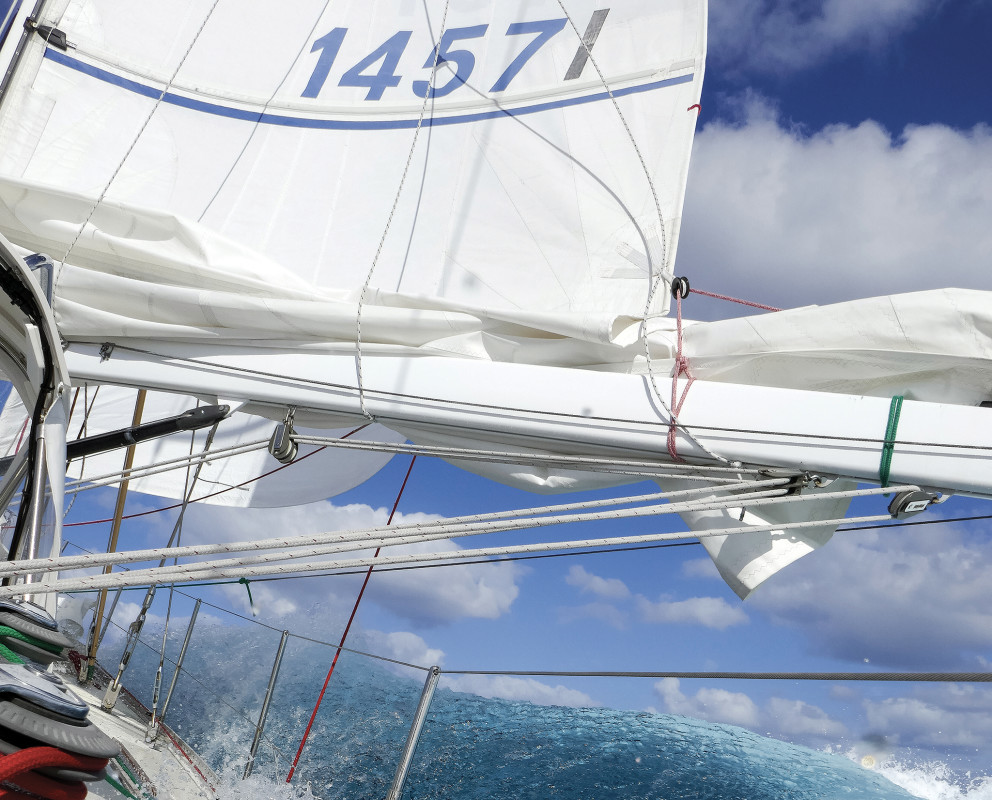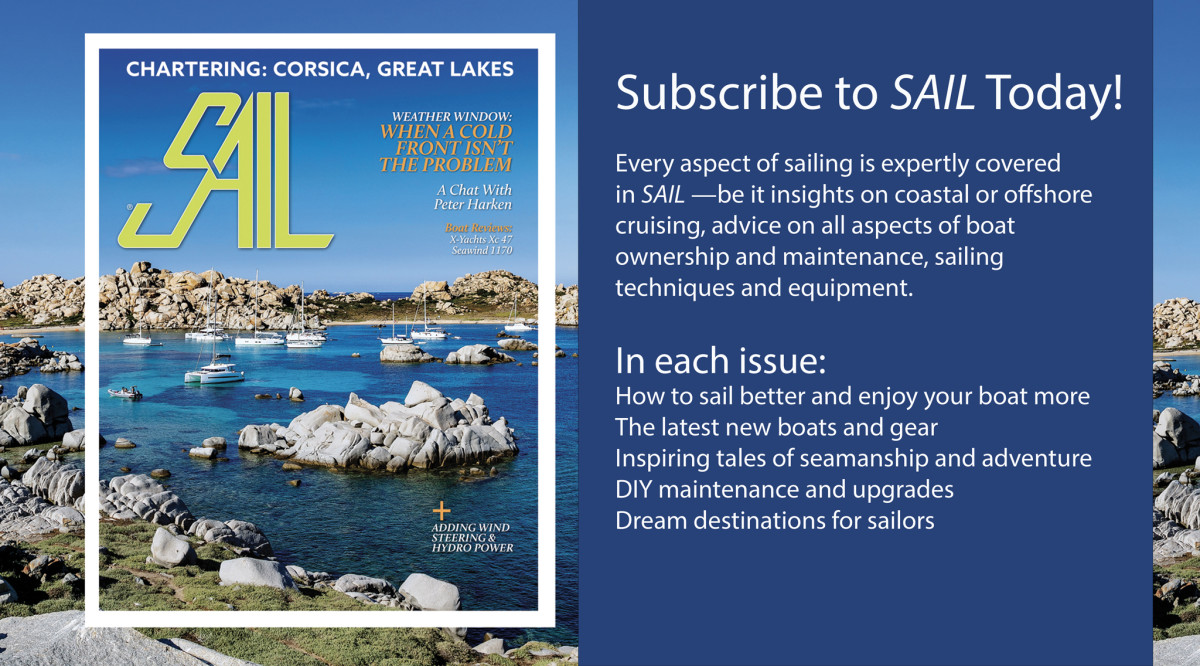

Photograph: Andy Schell
“Why didn’t he level the boat into the wind to boost/decrease the principle to keep away from tangling within the lazyjacks?”
Ah, the feedback part on YouTube. Usually perhaps not the best place to spend a day, however at the moment it’s impressed me.
James the Sailor Man, solo Alberg 30 sailor of YouTube fame, joined me on our passage to Greenland final summer season, and in January 2024 his five-part video collection, which splendidly paperwork crusing on our Farr 65 Falken, went reside on his channel.
The remark got here in response to a difficult second within the wind and fog as we had been reefing the mainsail. We had been broad reaching on port tack, the increase eased properly to starboard and secured with a preventer led via a fairlead on the bow and aft to a management winch within the cockpit. The Dyneema lazyjacks, which I’d put in just a few weeks earlier to assist management the majority of the 200-pound mainsail when furled or reefed, had been draped throughout the mainsail monitor, and because the sail was lowered, the vehicles acquired fouled on the windward lazyjacks. James climbed the decrease a part of the mast to free them.
There’s a widespread false impression that you need to flip into the wind when dealing with sails offshore, however this violates a cardinal rule I’ve about ocean crusing: By no means let your sails flog within the wind. That is one space the place inshore and offshore crusing strategies and schooling diverge. Flogging sails, even for a second, create alternatives for cascading accidents. Bowlines or shackles holding sheets can shake free. Heavy clew rings can knock towards the boat, or worse, the crew. On the very least, the sails are going to lose a considerable quantity of their helpful life the extra they’re shaken by the breeze.
When Matt Rutherford returned from his 309-day solo nonstop around-the-Americas voyage, the sails on his 27-foot Albin Vega regarded new. I overheard individuals commenting that perhaps he’d had them changed for the voyage up the Chesapeake for his homecoming in Annapolis.
“I simply by no means allow them to flog,” Matt stated, when somebody requested him instantly.
Inshore, sailors are taught to spherical up when hoisting or reefing sails, typically underneath energy, and certainly we’ll do that on our boats when initially setting sail in a protected harbor in flat water. However as quickly as you get offshore, the dynamics change. Even a relaxed day on the ocean produces sufficient waves and swell to make the movement on deck dramatically totally different than the flat water of a harbor, making it at finest tougher for crew dealing with sails and at worst harmful. Offshore, we set the sailplan up such that it’s workable on any level of sail, even a lifeless run with a poled-out headsail.
Efficiently doing so principally comes all the way down to managing friction, chafe, and catch factors. With an eased increase, the mainsail is commonly plastered up towards the standing rigging and spreaders, particularly on trendy boats with swept- again spreaders. You’ll typically see offshore cruising boats with foam taped across the trailing fringe of spreaders to mitigate the chafe from this on lengthy downwind voyages. Pretty led halyards and reef strains with as few adjustments of route as doable scale back friction.
A eager eye on the sails and rigging and a really feel for the strain on issues is essential. Electrical winches are harmful since you don’t really feel when a line is getting overloaded. Sheeting within the mainsail simply sufficient to get the sail off the rig can assist too, although the second you slack the halyard, the sail will bag out with the wind and onto the rig once more. This entire course of takes endurance and a very good setup. Downwind reefing with in-boom or in-mast furling is even trickier, with greater stakes—improperly aligned u-joints on these programs can break at sea, so be sure to learn the handbook and follow.
Our mistake on Falken that day was not correctly offsetting the lazyjacks to clear the monitor. As soon as in Greenland, I went aloft and put pad eyes on the spreaders to perform this, and we haven’t had any issues within the 7,000-plus miles since.
In the event you’re considering of ocean crusing, follow these reefing strategies inshore first, and get your boat set as much as make this as simple as doable. Your sails will final far longer, you’ll have much less drama throughout the reefing course of, and also you remove the domino impact of cascading errors when sails begin flogging. Plus, downwind reefing retains the boat flat and the obvious wind eased, making every little thing on deck simpler.

April 2024
Trending Merchandise
[product_category category=”trending” per_page=”8″ columns=”2″ orderby=”date” order=”desc”].
